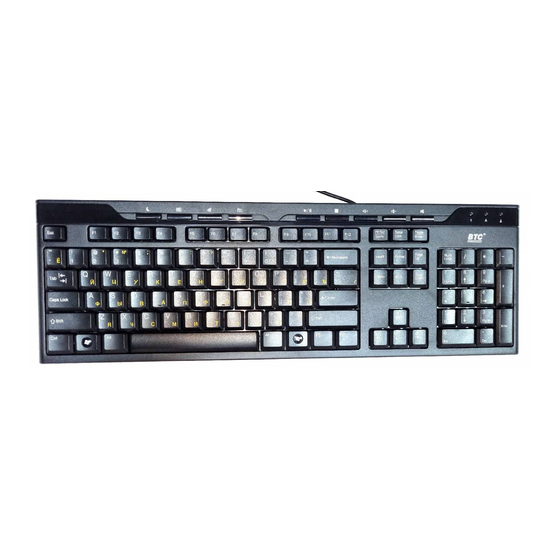
Advertisement
5
1
3
7
K
E
Y
5
1
3
7
K
E
Y
This keyboard is fully compatible with IBM PS/2.
Keyboard Cable Connector
PS/2 Compatible Cable
(6-pin Miniatures Din Connector)
Pin#
Signal Name
Voltage
1
Keyboard Clock
+5VDC Signal
2
Ground
0
3
Keyboard Data
+5VDC Signal
4
Reserved
0
5
+5VDC
+5VDC
6
Reserved
0
The ACPI Power Management
Keys and Their Functions
System requirement:
Microsoft Windows 98 operating system.
The system supporting ACPI or APMII.
ATX motherboard and ATX power supply.
The functions of the power management are specified and performed by Windows 98 operating
system, no vendor-specified driver is needed to use them, but the Windows 98 operating system is
necessary. There could be one or two or three ACPI power management keys on the keyboard, those
functions are as follows.
Power off key: Power down the system.
Sleep key:
Put the system to sleep.
Wake up key:
Wake up or powers up the system.
Power key:
(Single key with three functions above)
Press this key and hold over four seconds to power down the system.
Press this key and release it within four seconds to put the system to sleep.
When the system is asleep or powered down, press this key and release it within four
seconds to wake up or power up the system.
B
O
A
R
D
U
S
E
R
B
O
A
R
D
U
S
E
R
'
S
G
U
I
D
E
'
S
G
U
I
D
E
Advertisement
Table of Contents

Summary of Contents for BTC 5137
- Page 1 This keyboard is fully compatible with IBM PS/2. Keyboard Cable Connector PS/2 Compatible Cable (6-pin Miniatures Din Connector) Pin# Signal Name Voltage Keyboard Clock +5VDC Signal Ground Keyboard Data +5VDC Signal Reserved +5VDC +5VDC Reserved The ACPI Power Management Keys and Their Functions System requirement: Microsoft...
- Page 2 FCC GUIDELINES This equipment has been tested and found to comply with the limits for a Class B digital device, pursuant to Part 15 of the FCC Rules. These limits are designed to provide reasonable protection against harmful interference in a residential installation. This equipment generates, uses and can radiate radio frequency energy and, if not installed and used in accordance with the instructions may cause harmful interference to radio communications.










Need help?
Do you have a question about the 5137 and is the answer not in the manual?
Questions and answers